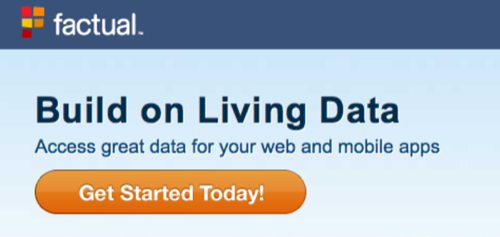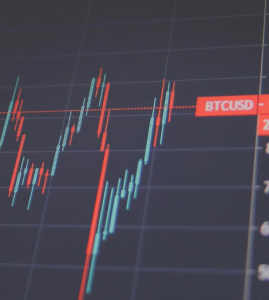Marcia Metz, a web operations executive at EMC Corporation recently coined the term information liquidity, the ability to freely flow assets and adapt them to different shapes, in the context of Web content management systems. I suggest the same term can apply in the world of financial data, and will show you how key cloud technologies is making this happen.

I predict the data cloud will decimate the existing world of market data. The ability to use information liquidity to move data between collaborating partners will create a new trajectory in trading methods and analytics. This will make the current methodologies look as antiquated as the ticker tape machines of the 1930s.
Information liquidity threatens one core business of incumbents, the legacy trading exchanges: the New York Stock Exchange, NASDAQ, London Stock Exchange and their ilk. For years, these organizations charged high fees for their market data. These organizations had driven their clown cars into a gold mine. Now the party is over.
The value of financial information has become a commodity years ago, especially for common instruments such as equities. Now a more radical change is afoot, driven by a change from information scarcity to information abundance.
Legacy exchanges have lost their pricing power, and they have been slow to catch on. Over the past decade a number of alternative trading venues, for example BATS Exchange and DirectEdge have emerged with radically lower cost structures. These upstarts are generating their own market data and freely distributing it. Given its many sources, the price of market data is going asymptotically to zero. And when data is free, it powers new applications.
For financial data consumers such as institutional traders, information liquidity will unleash unprecedented value.
Chris Lamb is a business strategy executive in financial media, financial technology, and web services. Previously he was at Thomson Reuters. He can be reached via email at [email protected].
The change in market feed pricing
In the past, multiple roadblocks based on technology, restrictive license rights and distribution models have impeded information flow.
Exchanges provided (and charged) for market feeds on an all-or-nothing basis. The feeds themselves were technically cumbersome and took months if not years to integrate into institutional systems. Now it is possible to obtain market data on-demand (via Web services), provision it in hours, and license it with usage-based commercial terms.
The new data paradigm exemplifies information liquidity, where data-as-a-service delivers market information from a platform, and where the data is morphed between collaborating partners.
Information liquidity begets information agility. This means that market data is transformed with a light technical touch, paid for as-needed, and feeds an ecosystem of collaborating applications.
The cloud data platform
An enabling technology is the emergence of the cloud data platform which drives a living-breathing data ecosystem. This completely transforms the cost, distribution, and use of financial data.
One of the most clarifying blog postings we have seen is entitled Data is the Next Major Layer of the Cloud, by Mark Suster, a venture capitalist at GRP Partners.
One of his investments, Factual, has created an open data platform and community in an effort to maximize data accuracy, transparency, and availability: they are doing for data what cloud computing is doing to data centers.

In his posting, Suster says: “What I love about Factual is that it democratizes data and make [sic] it an order of magnitude cheaper, more available and higher quality than the historical approach. [emphasis added]
Crushed by the cloud
As the cloud evolves, there is more collaborative analytics across companies. An analogy is the Web mash-up which combines existing information in new insightful ways. One example is Spotcrime which mixes police blotters and mapping software to give a graphical view of crime.
In the new metaphor, partners collaborate across extranets to enhance workflow and drive profitable trades. Market data from one partner dynamically recombines in the cloud and goes to an analytics engine at a second partner, to a risk engine at a third partner, and finally to a compliance process at a fourth partner. Each partner provides its value-add, better trades and higher profits.
Emerging opportunities
One of the key drivers is flexible and rapid access through web services interfaces, and flexible commercial terms. One company, Xignite, has built its business around this new model.
Another key opportunity is in financial data management and data provenance. Regulators and counter-parties back in 2008 were unable to understand their financial positions because the definition of the data itself was ambiguous. Was this Lehman Special Investment Vehicle the same as that one? Nobody knew. Data management and data provenance can help sort this problem.
A third opportunity, aggregation tools, will also play a role in this new world. The ability to aggregate data from radically different domains (not just different trading venues), the ability to combine structured and unstructured data, the new dynamic portioning models will radically alter the landscape.
Summary
Information liquidity begets information agility. With the emergence of the data cloud, and its much lower cost structure, an entirely new world emerges.
The advent of data-as-a-service will not only transform the economics and use of market data, but will also transfigure its manifestations. These new capabilities are no longer locked inside of proprietary systems, but flow freely to processes running in the cloud, linking insight and analytics across domains.

















